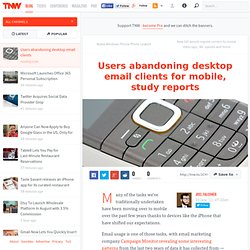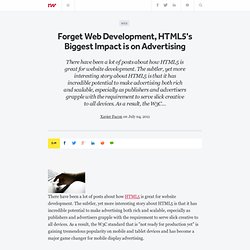

Pandora Trades Flash for HTML5 in Social Redesign. First Pandora IPO'd, then it hit 100 million users and now it is rolling out a redesign.

Ditching Flash in favor of HTML5, Pandora will be unveiling its new look first to Pandora One subscribers, rolling out to other users in the next few weeks. We have yet to get our hands on the new Pandora (look for a walkthrough when we do), but word on the street is that it's faster and much easier to use. The site hasn't changed much in terms of layout, although it does have some new features. Along the top of the site, there's a music control bar that stays put as you click around; lyrics appear on the homepage, along with comments; and search has been tweaked.
When you create a new station, as soon as you start typing, a drop-down menu will appear with suggestions tailored to your tastes (based on voting and listening history) as well as the keywords you're searching for. Pandora has also gotten a lot more social. Entertainment sites are increasingly trying to get into social. HTML5 Is An Oncoming Train, But Native App Development Is An Oncoming Rocket Ship. iOS Development with Excel - using Model Driven Development or Model Driven Architecture Developing iPhone and iPad apps in Excel?

Sounds crazy, but Excel offers advantages over other wireframe tools: 1) your team likely has it already (FREE). 2) most people know how to use Excel (no training costs). 3) Excel can hold each screen on a separate tab (user interface mock-ups). 4) Excel can flip through the screens with hot buttons to show the user experience (UX). 5) Excel has checkboxes, radiobuttons, drop-down lists and other GUI controls to simulate the controls of an iPhone app (UI). But thats not all. Excel allows the business logic to exist on a separate tab. Thus equations and data can exist in the same Excel-wireframe. How HTML5 will kill the native app.
Over the past two decades, the mobile industry has become increasingly stunted by fragmented protocols, standards, and regional differences.

But a hot new technology called HTML5 promises to remedy this by delivering an unprecedented open, democratic and wonderfully fertile mobile web. Evangelists say the HTML5 movement has so much momentum that it could defeat the native app — an application that is designed to run on a single platform — in as little as two years. Sundar Pichai, who leads Google’s HTML5-happy Chrome OS initiative, agrees that the “incredible advantages of the Web will prevail” over the dominant native app model. Another mobile developer expert Mike Rowehl adds: “We’ll forget that we even passed through another era of native apps on the way to the mobile web.” The transition comes at a time when the mobile revolution is driving economic growth in the US and abroad. So there’s tremendous logic behind HTML5’s onslaught.
Things are moving very quickly. Dive Into HTML5. Users abandoning desktop email clients for mobile, study reports - Mobile. Many of the tasks we’ve traditionally undertaken have been moving over to mobile over the past few years thanks to devices like the iPhone that have shifted our expectations.

Email usage is one of those tasks, with email marketing company Campaign Monitor revealing some interesting patterns from the last two years of data it has collected from — and here’s a sample size for you — over 2 billion recipients. The percentage of emails opened on a mobile device has risen from just 4% in May 2009 to 20% in May 2011 while desktop client usage has declined by 11%. Webmail has shown the least change over two years, with a 4% decline. As one might expect, among mobile devices the iPhone is leading the pack with a whopping 71.98% lead. The iPad actually appears next at 14.95% before other smartphones such as Android, which makes up 8.24% of the mobile email use. Forget Web Development, HTML5's Biggest Impact is on Advertising. There have been a lot of posts about how HTML5 is great for website development.

The subtler, yet more interesting story about HTML5 is that it has incredible potential to make advertising both rich and scalable, especially as publishers and advertisers grapple with the requirement to serve slick creative to all devices. As a result, the W3C standard that is "not ready for production yet" is gaining tremendous popularity on mobile and tablet devices and has become a major game changer for mobile display advertising. Why is this story particularly exciting right now? Just this month, commonly implemented ad serving platforms, such as Google with its Doubleclick DART ad serving platform and various other platforms used by premium publishers have been or are being upgraded to also track impressions on the mobile device. Web Forms. You are here: Home Dive Into HTML5 Diving In Everybody knows about web forms, right?

Make a <form>, a few <input type="text"> elements, maybe an <input type="password">, finish it off with an <input type="submit"> button, and you’re done. You don’t know the half of it.